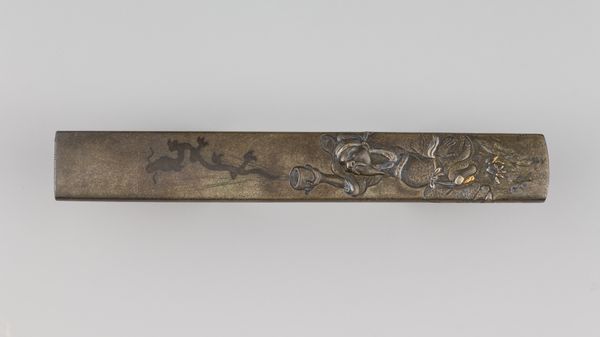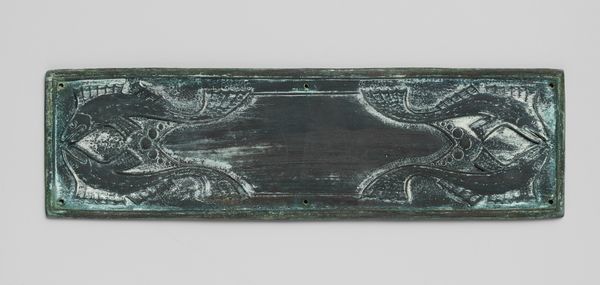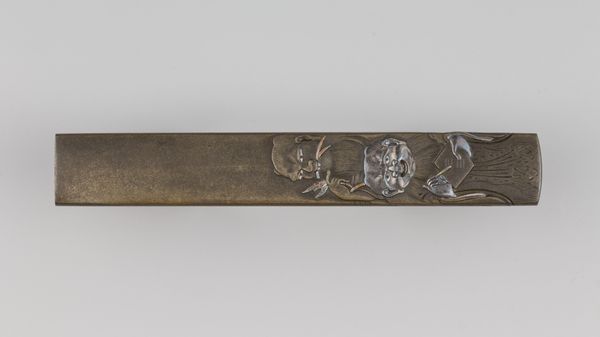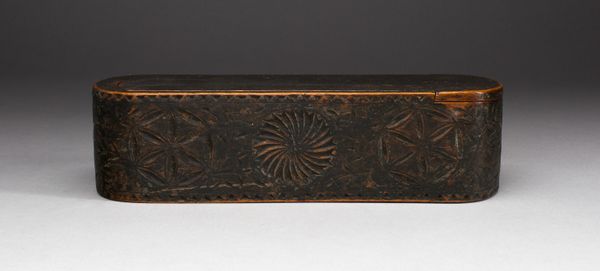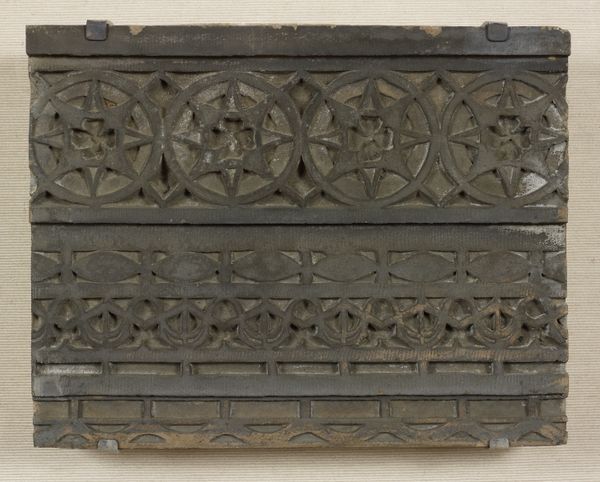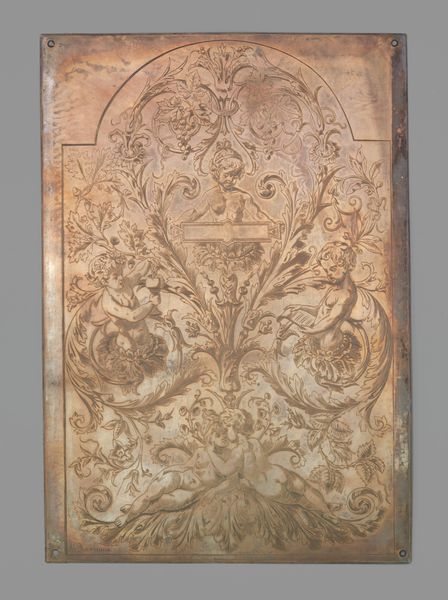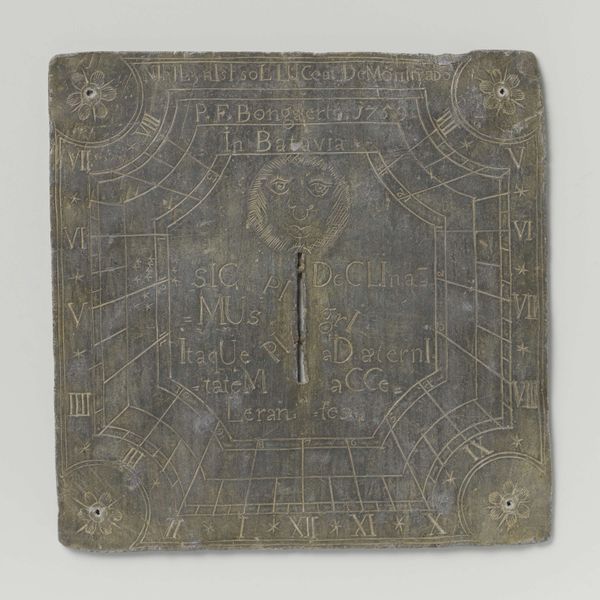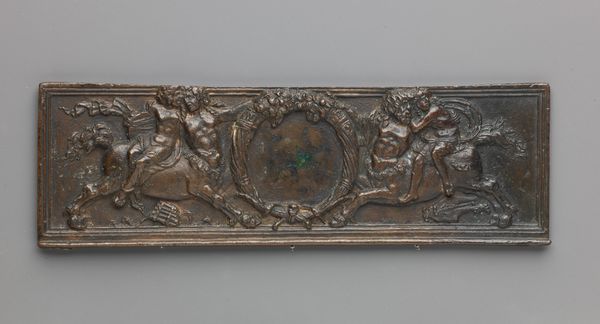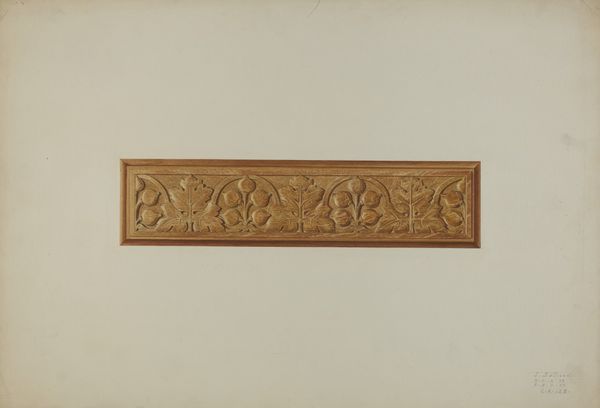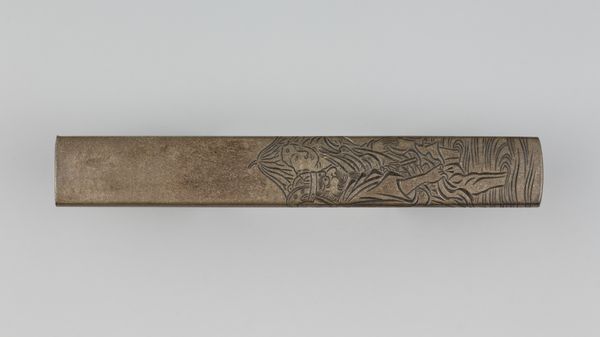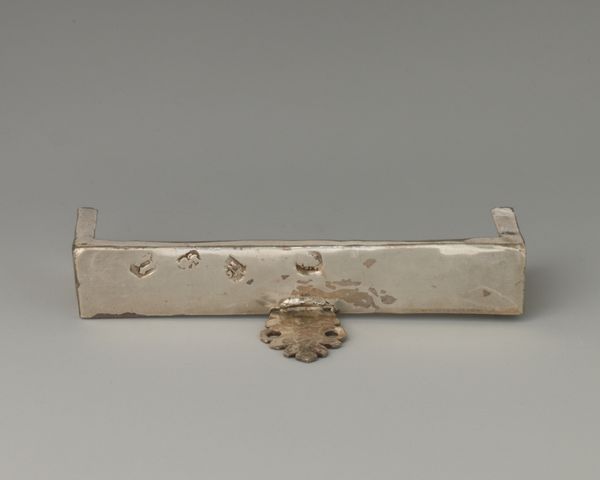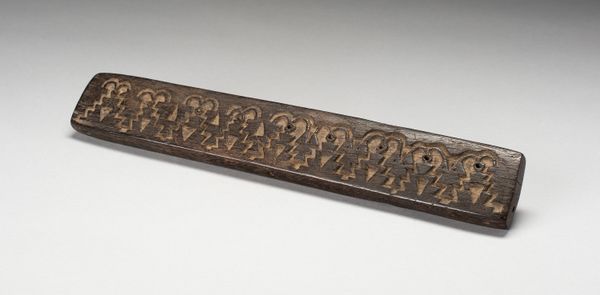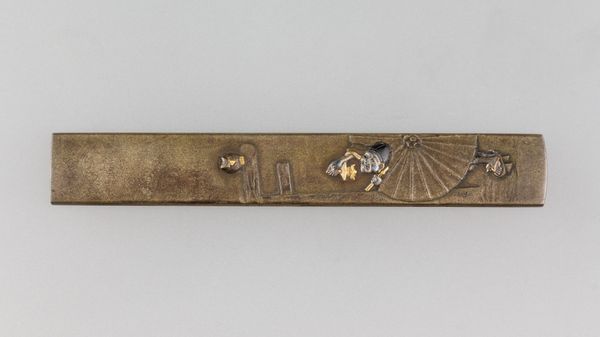
drawing, metal, relief, engraving
#
drawing
#
art-nouveau
#
metal
#
sculpture
#
relief
#
line
#
engraving
Dimensions: height 44 mm, width 109 mm
Copyright: Rijks Museum: Open Domain
Curator: Walking up to this object, the silvery sheen gives me a certain feeling of preciousness…it’s a metal relief entitled "La Jeunesse et la vie éternelle", or "Youth and Eternal Life," crafted by Gerrit Willem Dijsselhof around 1897. You can currently find it at the Rijksmuseum. Editor: My first thought: it looks like something you'd find pressed between the pages of an old book, a botanical specimen, dried and fragile, preserved in metal. There’s something ethereal, like captured moonlight, about the palette. Curator: I find the choice of engraving a metal plate significant, as the late 19th century saw intense debates around what constitutes “high art.” Metal reliefs like this existed in a strange space between craft and art; the rise of Art Nouveau really championed this ambiguity. Editor: Absolutely. And look at these flowing lines. They just drip with the sinuous grace that defines Art Nouveau, really echoing that constant dance between nature and human design. What kind of cultural trends informed its production, do you suppose? Curator: Given the fin-de-siècle anxieties about industrialization and social change, it makes perfect sense that Dijsselhof turns to nature and abstract linear forms. The tension between nature and abstraction offers an interesting lens into that era’s socio-political forces. Think of this botanical imagery as resistance to urban landscapes! Editor: But it is more than just flowers, wouldn’t you say? There’s also an incredibly meditative, rhythmic quality to this, something primal about the way Dijsselhof repeats patterns and lines. In essence, like a mantra…visual poetry. Curator: The themes in this particular work tie into a wider aesthetic movement that, at that time, explored these cyclical ideas of life and nature as escapes. As modernity shifts understandings of religion and social structures, art increasingly occupies this position as a space for introspection and seeking a new kind of “truth”. Editor: It does echo ideas about a constant stream, an endless transformation…a constant becoming. What better place than art to stage that? Looking at this plate has made me question what gets eternalized and why, through artistic preservation. Curator: And for me, this piece illuminates a specific period of uncertainty that, while historical, still carries considerable relevance.
Comments
No comments
Be the first to comment and join the conversation on the ultimate creative platform.
